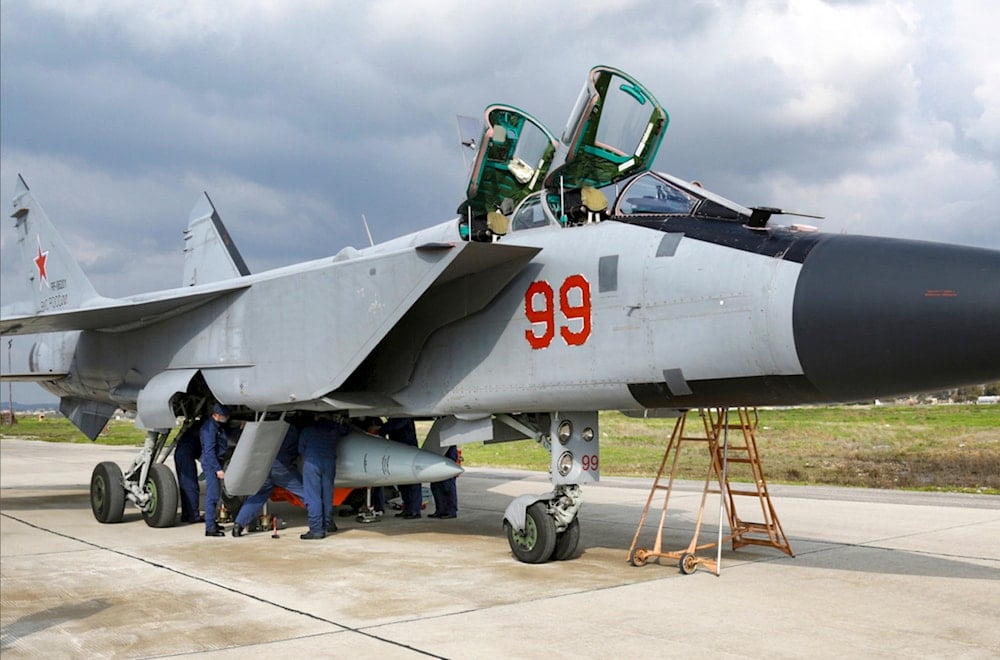Russia denies its jets entered Estonian airspace
Russia says its MiG-31 jets did not breach Estonian airspace near Vaindloo Island, rejecting NATO and Estonia’s claims of an airspace violation.
-

An MiG-31 fighter of the Russian air force carrying a Kinzhal hypersonic cruise missile is parked at the Hemeimeem air base in Syria, February 15, 2022 (AP)
The Russian Ministry of Defense denied that Russian fighter jets violated Estonian airspace, following claims by Estonia and NATO that Russian jets violated the airspace near Vaindloo Island.
The three Russian MiG-31 fighter jets, which were flying to the Kaliningrad region to conduct a planned flight from the Karelia region to a military airfield there, did not violate Estonian airspace, according to the Russian Defense Ministry on Saturday.
It emphasized in a statement that the flight was carried out in strict compliance with international airspace regulations and that the aircraft did not cross into the territory of any state, a fact which was confirmed by objective observations, according to the Ministry.
“During the flight, Russian aircraft did not deviate from the designated route and did not violate Estonian airspace. The flight path remained more than three kilometers away from Vaindloo Island, over the neutral waters of the Baltic Sea,” it said.
Estonia claimed that three Russian MiG-31 jets had violated its airspace near Vaindloo Island, a claim which was echoed by NATO, which also stated that the Russian jets had entered Estonian airspace and that the alliance responded immediately to intercept and stop the aircraft.
Tensions rise over airspace violations
This closely follows a claim by the Polish Border Guard on September 19 that two Russian fighter jets carried out a low-altitude flyover of the Petrobaltic oil platform in the Baltic Sea, though no evidence was provided to support the allegation.
In a statement posted on X, the border guard said it had notified the Polish Armed Forces and other relevant agencies, a point that was elaborated on by spokesperson Katarzyna Przybysz of the Maritime Border Guard Unit, who told reporters that the platform lies outside Poland’s territorial waters but within its exclusive economic zone (EEZ).
On September 10, Moscow launched waves of missiles and drones targeting Ukrainian defense industry sites, with some craft veering into NATO territory.
In response, Poland scrambled fighter jets, temporarily shut down airspace over Lublin, and invoked Article 4 of the NATO treaty, requesting consultations over what it described as a threat to its security and territorial integrity. NATO subsequently announced Operation Eastern Sentry to reinforce air defenses along the alliance’s eastern flank.
Investigators later found that the drones that reached Poland were unarmed, heightening speculation that they were meant to gauge Western reactions.
"Interestingly, they were all duds, which suggests to me that Russia tried to test us without starting a war," Radoslaw Sikorski told The Guardian, adding that Moscow appeared to be probing NATO's readiness without risking direct escalation.

 3 Min Read
3 Min Read









